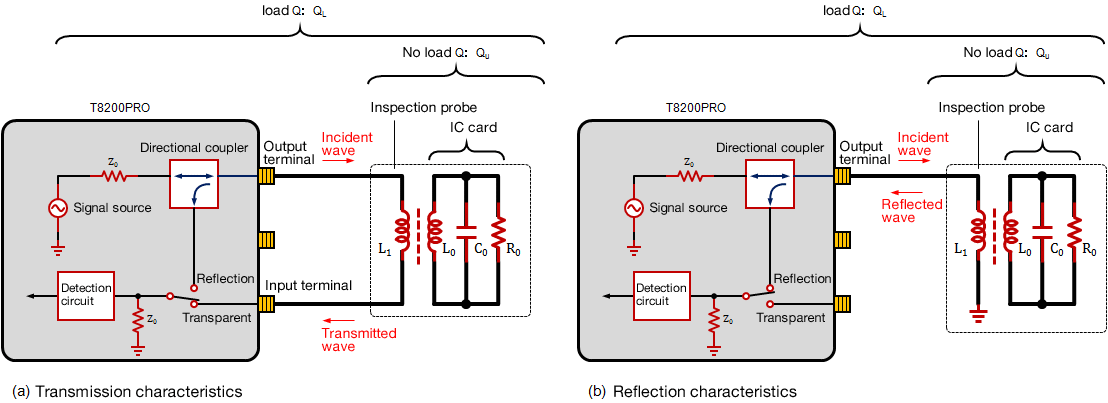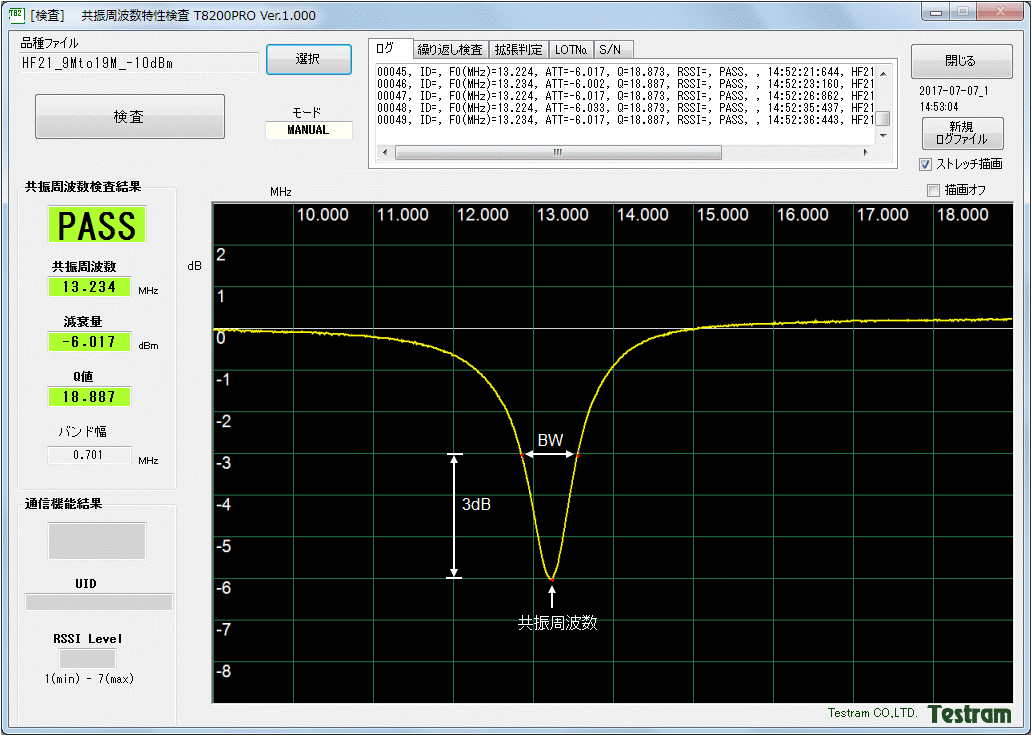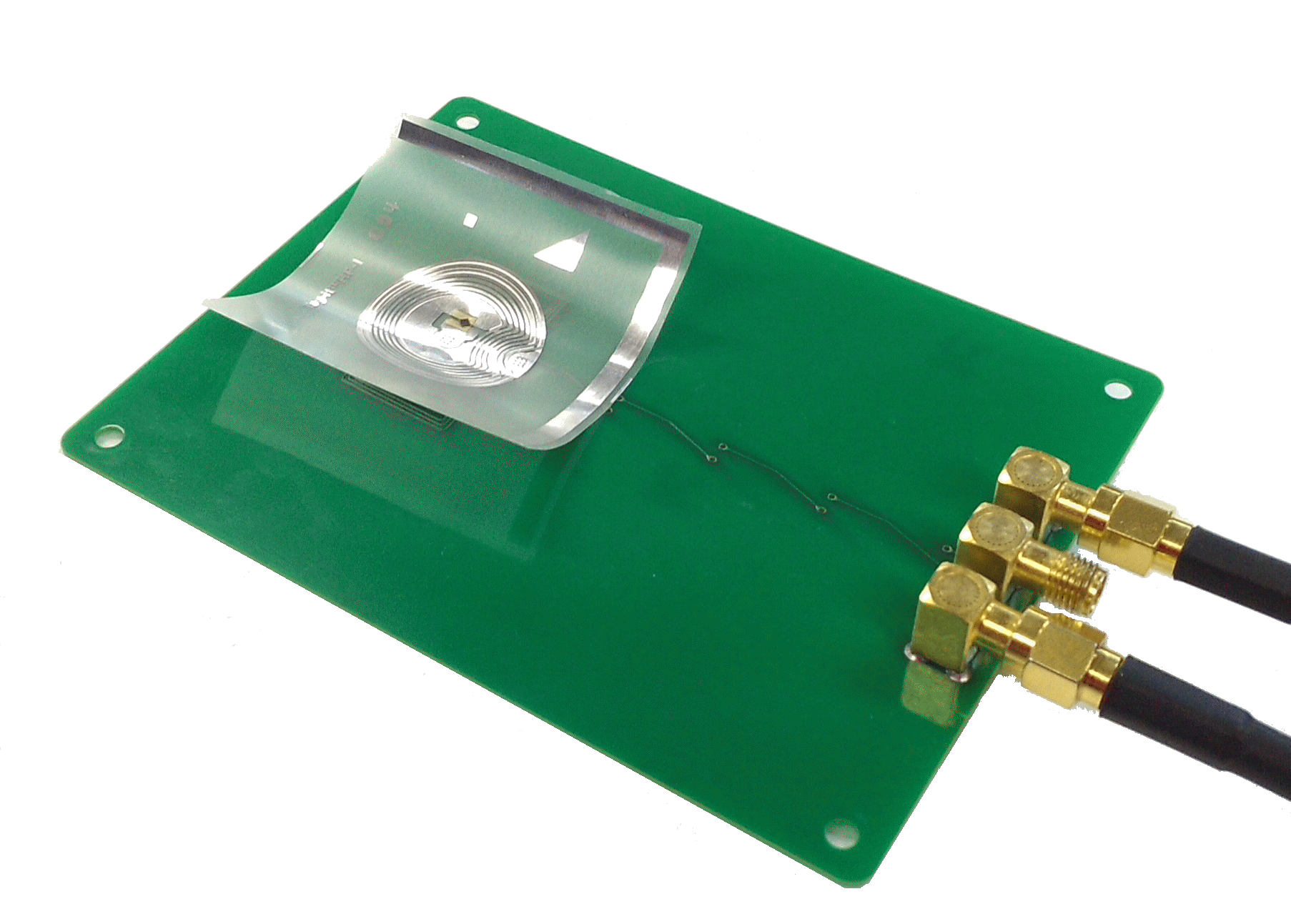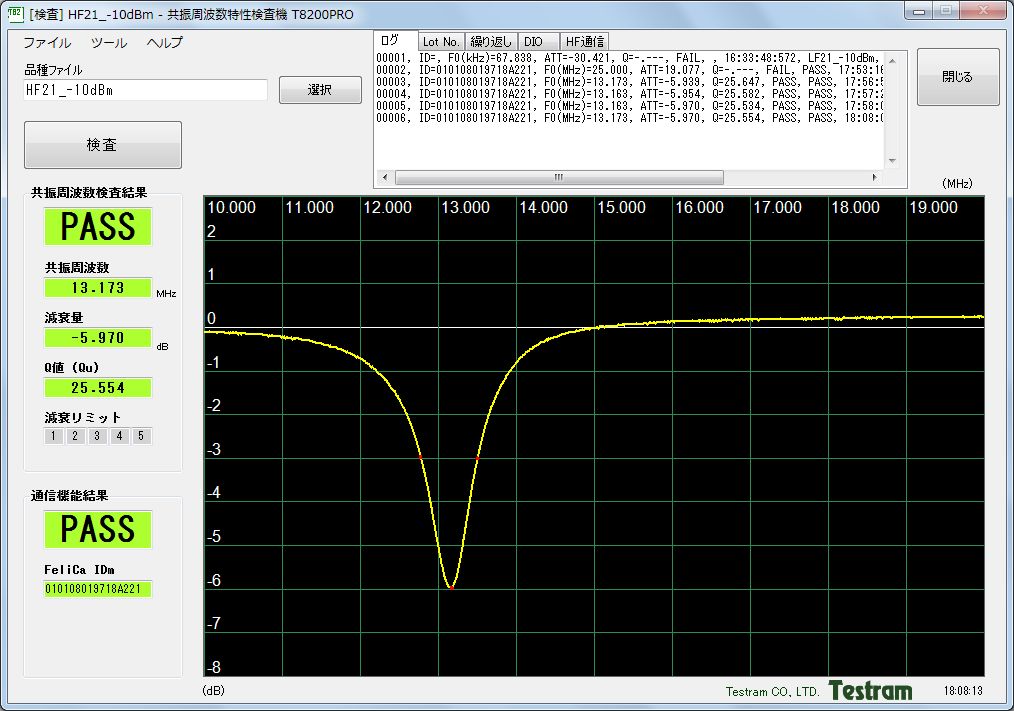[T8200 PRO] What are loaded Q and unloaded Q?
Q (quality factor) is an index that expresses the "goodness" of a resonant circuit, but the T8200PRO can inspect loaded Q (loaded Q) or unloaded Q (unloaded Q).
What are Loaded Q and Unloaded Q?

Figure 1 Load Q and No Load Q
Load Q (QL, loaded Q)
- It refers to the Q of the entire measurement system including the measurement object, the measurement antenna (probe), the output resistance of the drive circuit, and the input resistance of the reception circuit (see Fig. 1).
- Calculated as "load Q = resonant frequency / bandwidth" (see Figures 2 and 3). Bandwidth BW is 3 dB from the resonance point for transmission (S21) and -3 dB for total internal reflection (0 dB) for reflection (S11).
- When the amount of attenuation is large (about 12 dB or more for S21, about 25 dB or more for S11), the influence of the drive circuit / receiving circuit can be ignored, and QL ≈ Qu for transmission and QL ≈ Qu / 2 for reflection. It becomes.
Unloaded Q (Qu, unloaded Q)
- Refers to the Q of the measurement object and the measurement antenna (probe) (see Fig. 1). The value is close to the unique Q of the object to be measured.
- No-load Q is calculated from the theoretical formula of the resonant circuit considering the signal source resistance and load resistance. The bandwidth does not necessarily have to be the "3dB position" as shown in Figures 2 and 3 (it can be set to any position).
- Even if the distance between the object to be measured and the measuring antenna (probe) changes, or if the shape and number of turns of the measuring antenna change slightly, the no-load Q is not significantly affected.

Fig. 2 Resonance characteristic inspection result by transmission (load Q)

Fig. 3 Resonance characteristic inspection result by reflection (load Q)

Figure 4 Even if the tag is slightly curved, it will not be affected if it is a no-load Q.

Fig. 5 Resonance characteristic inspection result by transmission (no load Q)
Setting method
(1) Select [System Settings / Maintenance] from the top menu.
(2) Select load Q or no load Q in the "Q value calculation method" field.
(2) Select load Q or no load Q in the "Q value calculation method" field.

When outputting no-load Q in the reflection characteristic test, specify either under-coupled (loose
■ under-coupled
Specify this when the magnetic field coupling between the measurement object and the measurement antenna (probe) is weak. If the size of the object to be measured and the size of the measuring antenna (probe) are significantly different, it corresponds to the case where the distance between the two is about several mm or more.
■ over-coupled
Specify this when the magnetic field coupling between the measurement object and the measurement antenna (probe) is strong. This applies when the object to be measured and the measuring antenna (probe) are of the same size and are in close contact with each other.
Specify this when the magnetic field coupling between the measurement object and the measurement antenna (probe) is weak. If the size of the object to be measured and the size of the measuring antenna (probe) are significantly different, it corresponds to the case where the distance between the two is about several mm or more.
■ over-coupled
Specify this when the magnetic field coupling between the measurement object and the measurement antenna (probe) is strong. This applies when the object to be measured and the measuring antenna (probe) are of the same size and are in close contact with each other.
